Leaping into the Asian Century
If it’s true, as our politicians keep telling us, that this is the Asian century, then maybe it’s time we extended this concept to our dinner tables.
At least that’s the thinking of TV Chef Poh Ling Yeow: though we may be familiar with Asian cuisine, we don’t necessarily cook it at home.
“While we love our Asian food here, we’ve got a lot more eating and experimenting to do to live up to our reputation as a real foodie nation,” she said.
“I’d really like to see dishes such as laksa, rendang and chicken satay rival the likes of spag bol on the nightly Aussie dining table.”
Just ten days ago Prime Minister Julia Gillard outlined her blueprint for Australia’s future in the Asian Century White Paper. In it she urged more close engagement with Asia.
What better way than through an understanding of the food of these countries?
Recent research of more than 1200 Australians aged 18 – 64, commissioned by Malaysia Kitchen Australia, showed half had never eaten Indonesian fare, 46 per cent have never tried Malaysian food and 40 per cent have never had Japanese.
Awareness of where Asian dishes come from was also low. Only half could say Green Chicken Curry was from Thailand while a third couldn’t identify Beef Vindaloo as an Indian dish.
Over a delicious luncheon feast at Chinta Ria last week, Poh said it wasn’t until she was in her early 30s that she started cooking Malaysian food at home.
“As a fifth generation Chinese Malaysian, so much of my food journey has been driven by the fact that I’ve lost a good part of my heritage as a child migrant, trying to assimilate in Australia,” she said. “In my early 30s I came to understand the powerful, cultural legacy food leaves in migrant cultures so I turned to it as a way of reclaiming my cultural roots. Food has given me a link to the history of my ancestors and something of my culture I can now perpetuate into the future.”
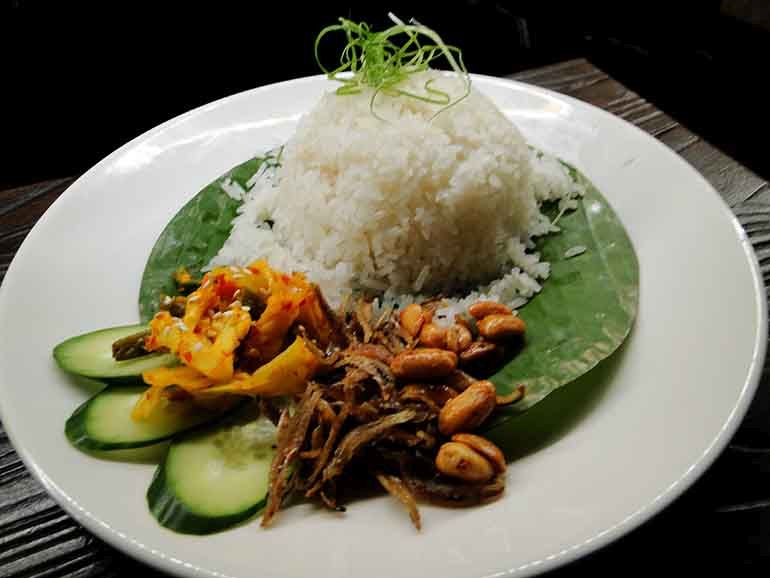 “My first food memories of Malaysia are colourful and varied. For example, I used to detest getting hauled through the smelly wet markets by one arm, the other hand firmly pinching my nose and if so much as a dot of the mystery goo on the ground hit a toe in open sandals, I would become hysterical.
“As consolation, kaya (or coconut jam) toast with strong, sweet black coffee which would be tipped into a shallow saucer to cool and for me to slurp from. A significant moment was also the time I realised at age 6, that getting through a bowl of excruciatingly spicy assam laksa was worth it because it tasted so damn good – the day I earnt my culinary rite of passage!
“To this day it remains what I call my death row dish, the meal I’d easily choose if it was my last: a dark fish broth that’s salty, sour and spicy with mung mean noodles, garnished with refreshing bursts of mint, laksa leaf, cucumber, pineapple, torch ginger flower, and a dollop of shrimp molasses mixed in at the beginning to give the dish yet another layer of complexity. It makes me salivate instantly just thinking about it.”
“My first food memories of Malaysia are colourful and varied. For example, I used to detest getting hauled through the smelly wet markets by one arm, the other hand firmly pinching my nose and if so much as a dot of the mystery goo on the ground hit a toe in open sandals, I would become hysterical.
“As consolation, kaya (or coconut jam) toast with strong, sweet black coffee which would be tipped into a shallow saucer to cool and for me to slurp from. A significant moment was also the time I realised at age 6, that getting through a bowl of excruciatingly spicy assam laksa was worth it because it tasted so damn good – the day I earnt my culinary rite of passage!
“To this day it remains what I call my death row dish, the meal I’d easily choose if it was my last: a dark fish broth that’s salty, sour and spicy with mung mean noodles, garnished with refreshing bursts of mint, laksa leaf, cucumber, pineapple, torch ginger flower, and a dollop of shrimp molasses mixed in at the beginning to give the dish yet another layer of complexity. It makes me salivate instantly just thinking about it.”
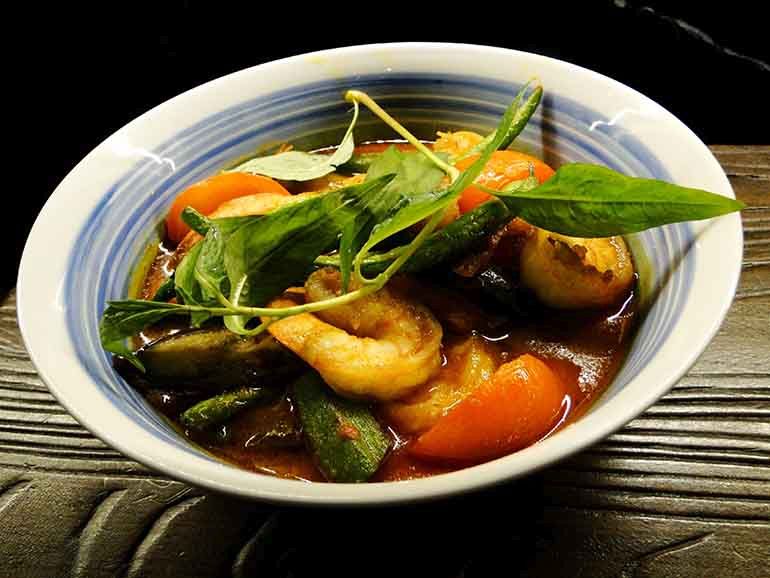 “Then there were those particular points in the year when all the extended womenfolk in the family would get together and share the load to make labour intensive dishes like joong; or the times when my Great Aunty Kim would prop me up on a stool, patiently coaching me through washing gluten and sharing special Buddhist vegetarian dishes with her at particular points on the lunar calendar.
“Until now eating chilli crab without the nearby funk of open drains is not quite the same and I grow misty remembering the late night house to house visits from hawker vendors ringing the bells on their bikes offering a delicious supper of char kway teow or mee rubus.”
Poh came to Australia when she was 9 and learnt to cook Western-style. “I measured everything carefully whereas Malaysian cooking is far more tactile” she said.
“When we first arrived, my mum couldn’t even find fresh coriander.”
Poh loves to eat at home and rarely eats out. One of her favourite ingredients is belacan because it adds flavour to many dishes such as soups and curries; other pantry staples include dried chillies and shrimps. She’s also keen on galangal (“it’s perfumed and woody and pairs well with lemongrass”) and pandan leaf (used similarly to vanilla).
“As Australians travel more, their palates are broadening and an appreciation for authentic flavours if definitely growing,” said Poh.
“I’m really excited about helping people realise they don’t need to be intimidated by South East Asian flavours and exotic ingredients such as galangal, belacan, tamarind and pandan, or dishes that might seem complex to make.
“More often than not the ingredient lists are longer to read than the method and it’s not difficult at all. I remember being intimidated by the never-ending ingredient lists but it’s really about having a go, taking it one step at a time.”
Just as Italian food made the transition from restaurants to our dining tables at home, it’s time Asian cuisine made the same leap.
Spicy Note: check out the food stalls in Parramatta, Sydney, at the Parramasala festival to learn more about the foods of south Asia this week (Nov 8 – 11th).
Please note: I was a guest of Chinta Ria and Malaysia Kitchen Australia.
“Then there were those particular points in the year when all the extended womenfolk in the family would get together and share the load to make labour intensive dishes like joong; or the times when my Great Aunty Kim would prop me up on a stool, patiently coaching me through washing gluten and sharing special Buddhist vegetarian dishes with her at particular points on the lunar calendar.
“Until now eating chilli crab without the nearby funk of open drains is not quite the same and I grow misty remembering the late night house to house visits from hawker vendors ringing the bells on their bikes offering a delicious supper of char kway teow or mee rubus.”
Poh came to Australia when she was 9 and learnt to cook Western-style. “I measured everything carefully whereas Malaysian cooking is far more tactile” she said.
“When we first arrived, my mum couldn’t even find fresh coriander.”
Poh loves to eat at home and rarely eats out. One of her favourite ingredients is belacan because it adds flavour to many dishes such as soups and curries; other pantry staples include dried chillies and shrimps. She’s also keen on galangal (“it’s perfumed and woody and pairs well with lemongrass”) and pandan leaf (used similarly to vanilla).
“As Australians travel more, their palates are broadening and an appreciation for authentic flavours if definitely growing,” said Poh.
“I’m really excited about helping people realise they don’t need to be intimidated by South East Asian flavours and exotic ingredients such as galangal, belacan, tamarind and pandan, or dishes that might seem complex to make.
“More often than not the ingredient lists are longer to read than the method and it’s not difficult at all. I remember being intimidated by the never-ending ingredient lists but it’s really about having a go, taking it one step at a time.”
Just as Italian food made the transition from restaurants to our dining tables at home, it’s time Asian cuisine made the same leap.
Spicy Note: check out the food stalls in Parramatta, Sydney, at the Parramasala festival to learn more about the foods of south Asia this week (Nov 8 – 11th).
Please note: I was a guest of Chinta Ria and Malaysia Kitchen Australia.

Rice on banana leaf with some of Poh’s pantry essentials, Chinta Ria, Sydney

Assam Prawns, Chinta Ria. Sydney

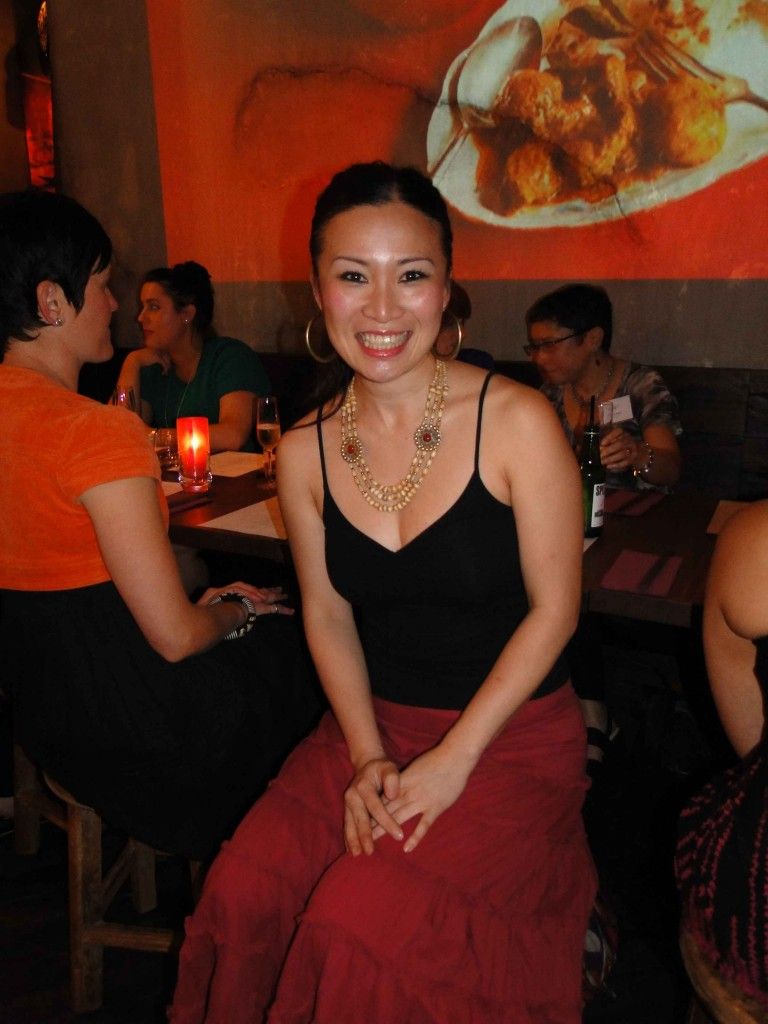
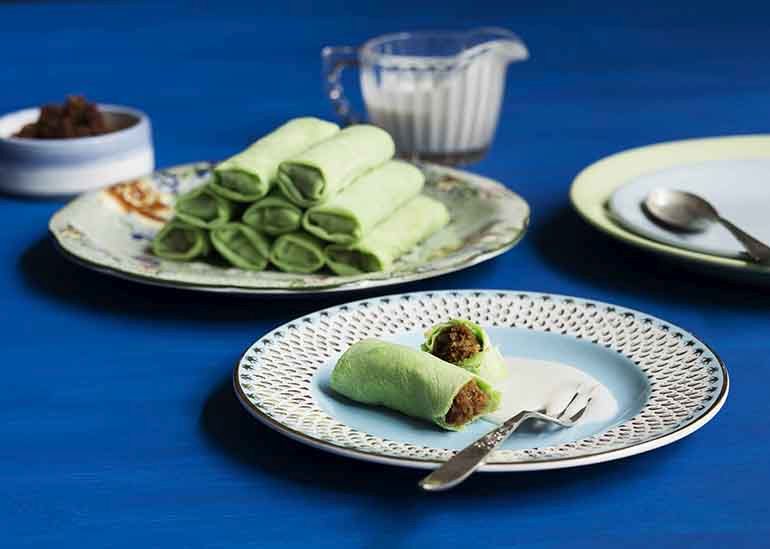
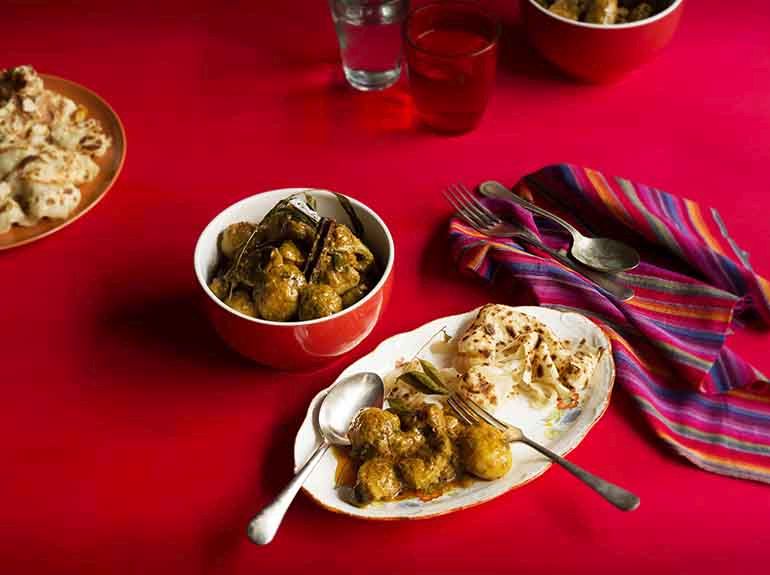
Hi Poh, I was watching SBS33 where your Mum was making Assam Laksa.
I cannot find the ‘shrimp molasses’. Would you let me know what it is or if it goes by another name. Could not find it on Google.Thanks for your wonferful programs. I love your recipes.Looking forward to hearing back from you soon. Cheers,Malou
Hi Malou,
This isn’t Poh’s webpage…perhaps these links might help in your search:
https://www.crosbys.com/molasses-shrimp/
OR https://www.crosbys.com/two-grilled-shrimp-recipes/
kind regards,
Sheridan Rogers